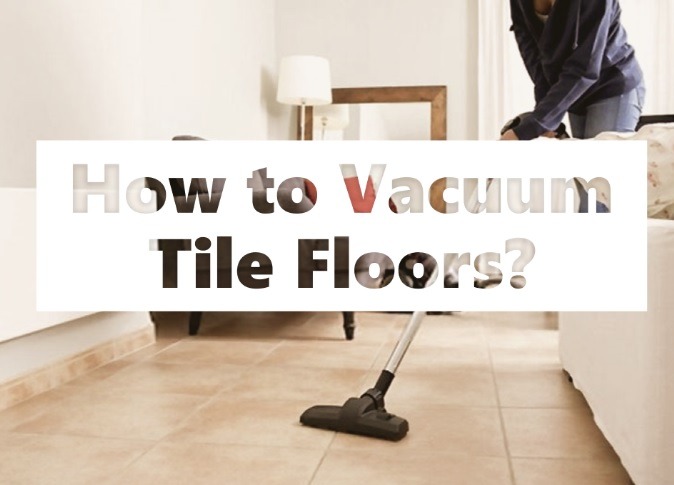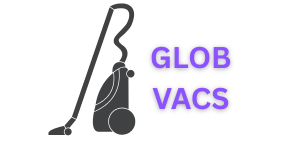Table of contents

Vacuuming tile floors is an essential part of maintaining a clean home. Tile floors can collect dust, dirt, and other debris, and regular vacuuming can help prevent them from accumulating and damaging the surface. However, it’s important to use the right technique and a good vacuum for tile floors to avoid scratching or damaging the tile. In this article, we will discuss how to vacuum tile floors and whether or not vacuums can hurt tile floors.
Steps for vacuuming tile floors:
So, below are the steps you should follow while vacuuming the tile floors
1. Choose the Right Vacuum:
Before you start vacuuming your tile floors, it’s essential to choose the right vacuum. A vacuum with a motorized brush roll can scratch the surface of your tile floors, so it’s best to use a vacuum with a hard floor setting. If you have a large area of tile floors, consider investing in a canister vacuum with a long hose and a variety of attachments, including a hard floor attachment.
2. Prepare the Area:
Before you begin vacuuming, prepare the area by removing any objects from the floor, such as toys, furniture, or debris. This will ensure that you can easily move the vacuum around without any obstacles in the way.
3. Adjust the Vacuum:
Next, adjust the vacuum to the hard floor setting. This setting will turn off the motorized brush roll and prevent it from scratching the surface of your tile floors. If your vacuum doesn’t have a hard floor setting, you can also turn off the brush roll manually.
4. Start Vacuuming:
Begin vacuuming your tile floors by starting at one end of the room and working your way to the other. Use a back-and-forth motion, overlapping each pass slightly to ensure that you pick up all debris. If you come across a particularly dirty spot, use the crevice tool or brush attachment to clean it thoroughly.
5. Clean the Vacuum:
After you have finished vacuuming your tile floors, clean the vacuum thoroughly. Empty the dustbin or replace the bag, and clean any attachments that you used. This will prevent any debris or dirt from accumulating in the vacuum and potentially damaging your tile floors in the future.
Also Read: Can I Vacuum After Pest Control?
Will The Vacuum Hurt Tile Floors?
Using a vacuum to clean tile floors is generally safe, as long as you use the right technique and equipment. However, some types of tile may be more susceptible to scratches or damage than others. Here are some things to consider when using a vacuum on tile floors:
1. Ceramic Tile:
Ceramic tile is a popular flooring option that is durable and easy to maintain. However, it’s essential to use the right vacuum setting and avoid using a vacuum with a motorized brush roll. This can scratch the surface of the tile and cause damage over time.
2. Porcelain Tile:
Porcelain tile is a harder and denser tile that is more resistant to scratches and damage. However, it’s still important to use the right vacuum setting and avoid using a vacuum with a motorized brush roll.
3. Natural Stone Tile:
Natural stone tiles, such as marble or granite, is more susceptible to scratches and damage than other types of tile. When vacuuming natural stone tile floors, it’s important to use a vacuum with a soft bristle attachment and avoid using a motorized brush roll.
To summarize the information presented above, the following table outlines the different types of tile and the vacuum settings that are safe to use:
| Type of Tile | Vacuum Setting |
|---|---|
| Ceramic Tile | Hard floor setting, avoid motorized brush roll |
| Porcelain Tile | Same as above |
| Natural Stone Tile | Soft bristle attachment, avoid motorized brush roll |
Dont do these mistakes while cleaning tile floors
While vacuuming tile floors can be an effective way to remove dirt and debris, there are also several things that you should avoid doing to prevent damage to the tile and ensure that it remains in good condition. Here are some things to avoid while cleaning tile floors with a vacuum cleaner:
- Using a vacuum with a motorized brush roll:
As mentioned earlier, using a vacuum with a motorized brush roll can cause scratches and damage to the surface of the tile. To avoid this, use a vacuum with a hard floor setting or turn off the brush roll manually. - Not adjusting the vacuum setting:
If you’re using a vacuum with multiple settings, be sure to adjust it to the right setting for tile floors. This will prevent damage and ensure that the vacuum is effective at removing dirt and debris. - Vacuuming wet floors:
Never vacuum wet floors as this can damage the vacuum cleaner and pose a risk of electrocution. Ensure that the tile floor is completely dry before vacuuming. - Using abrasive cleaning solutions:
Avoid using abrasive cleaning solutions or harsh chemicals that can damage the surface of the tile. Instead, use a mild cleaning solution and a soft cloth to wipe down the tile before vacuuming. - Not cleaning the vacuum regularly:
A vacuum that is not cleaned regularly can accumulate dirt and debris that can scratch the surface of the tile. Be sure to empty the dustbin or replace the bag after each use and clean any attachments that you used.
By avoiding these common mistakes, you can effectively clean your tile floors with a vacuum cleaner while keeping them in good condition. Remember to take care when vacuuming and to use the right techniques and equipment to ensure that your tile floors remain clean and beautiful.
Conclusion:
In conclusion, vacuuming tile floors is an essential part of maintaining a clean home. However, it’s important to use the right technique and equipment to avoid scratching or damaging the surface of the tile. When vacuuming tile floors, it’s essential to choose the right vacuum with a hard floor setting and avoid using a motorized brush roll that can scratch the tile. Additionally, it’s important to prepare the area, adjust the vacuum to the right setting, and clean the vacuum thoroughly after vacuuming to prevent any debris from accumulating and potentially damaging your tile floors in the future.
